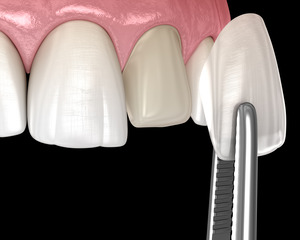
When you get your veneers, it won’t be long before you forget that they aren’t your real teeth. Their strength and beauty mean that they’ll blend in perfectly with the rest of your smile, meaning that you can go through life confident in the quality of your teeth.
However, that can make it all the more shocking if your veneer falls off. While this can be a bit scary, everything should work o1ut just fine if you stay calm. Here’s what you should do if your cosmetics come loose.
Step 1: Retrieval
First, handle the veneer with utmost care. If the veneer has completely detached, gently retrieve it, making sure not to damage it further. Rinse it with lukewarm water to clean off any debris but avoid using harsh chemicals or scrubbing it vigorously. If the veneer is still partially attached, leave it in place and avoid touching or pressing it.
Step 2: Protection
Next, take measures to protect your tooth. Avoid eating with the exposed tooth, especially hard, sticky, or hot foods that could cause discomfort or further damage. Rinse your mouth with warm salt water to maintain oral hygiene and reduce the risk of infection. To alleviate sensitivity and provide some protection, you can use dental wax or temporary dental cement, which are available at most pharmacies. Apply these products carefully, following the instructions, to cover the exposed tooth until you can visit your dentist. This temporary solution helps shield the tooth from sensitivity and potential damage.
Step 3: Get Some Help
Contact your dentist immediately to inform them about the situation. Describe the condition of both the veneer and the underlying tooth in detail. Schedule an emergency appointment as soon as possible, explaining the urgency of your case. Many dental offices reserve time for urgent cases, so emphasize the need for prompt attention. In the meantime, follow your dentist’s instructions, which may include continuing to protect the tooth and avoiding certain foods or activities.
Finally, during your dental appointment, your dentist will assess the situation and determine the best course of action. If the veneer is undamaged and the tooth is still in good condition, the dentist may be able to reattach the original veneer using dental adhesive. However, if the veneer is damaged or the underlying tooth requires treatment, the dentist may need to take new impressions and create a replacement veneer. This process could involve additional appointments and temporary solutions to protect your tooth in the interim.
While losing a veneer can be scary, it isn’t the end of the world. Keep this guide in mind and you’ll be feeling better in no time!
About the Author
Dr. David M. Fisher, Jr has seen just about everything in his 20 years as a dentist. No matter what happens to your teeth or what brings you into his office, odds are that he has the expertise necessary to help you get the care that you need. More than that, he takes the time to truly get to know his patients, ensuring their comfort through every part of the process. Dr. Fisher received his dental degree from the University of North Carolina at Chapel Hill and continues his education to this day!
If you have any questions about veneers, he can be reached at his website or by phone at (336) 288-1242.

